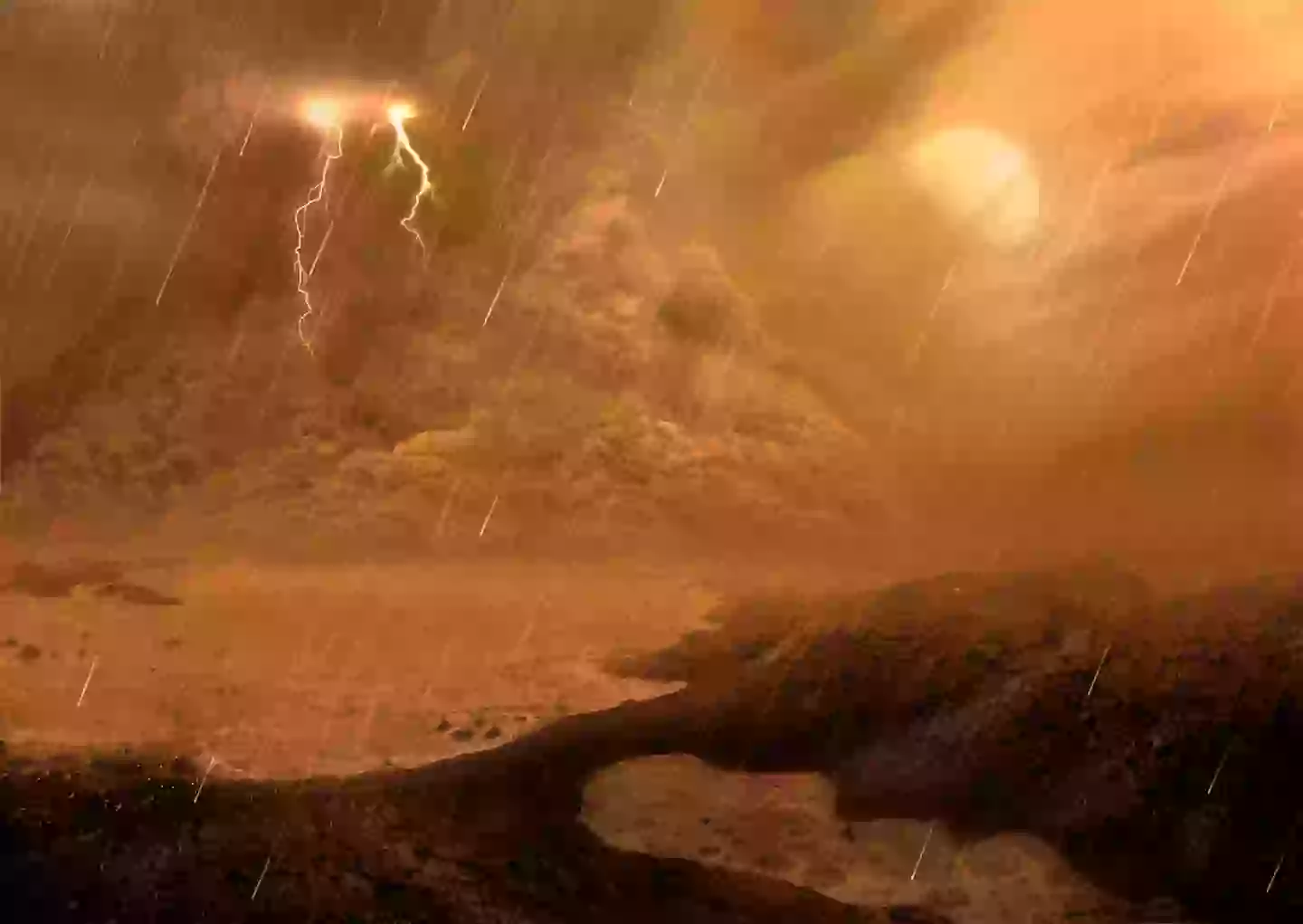Research has explored the potential for life on Titan, Saturn’s largest moon, and speculated on its possible forms.
Titan, the second largest moon in our solar system, is located approximately 1.2 billion kilometers (745 million miles) from Earth.
Scientists have long contemplated the possibility of life on this moon, often characterized as ‘Earthlike on the surface, ocean world on the inside,’ and have pondered what that life might resemble if it exists, including ‘where it is most likely to occur and how much of it might be present’.
A study was conducted by an international team of researchers, co-led by Antonin Affholder from the University of Arizona Department of Ecology and Evolutionary Biology, along with Harvard University’s Department of Earth and Planetary Sciences. Their goal was to theorize the potential for life on Titan and assess its feasibility.
The findings, published in The Planetary Science Journal under the title “The Viability of Glycine Fermentation in Titan’s Subsurface Ocean,” delved into Titan’s organic chemistry to evaluate its capacity to support life.
Lead author Antonin Affholder, as cited by EurekAlert, mentioned, “There has been this sense that because Titan has such abundant organics, there is no shortage of food sources that could sustain life.”
He further stated, “We point out that not all of these organic molecules may constitute food sources, the ocean is really big, and there’s limited exchange between the ocean and the surface, where all those organics are, so we argue for a more nuanced approach.”
The study examined fermentation, a process where microorganisms like yeasts and bacteria convert carbohydrates into alcohol, acids, or other products. This process ‘evolved early in the history of Earth’s life’ and the study aimed to determine whether ‘similar microbes [could] exist on Titan’.
Affholder added: “If so, what potential does Titan’s subsurface ocean have for a biosphere feeding off of the seemingly vast inventory of abiotic organic molecules synthesized in Titan’s atmosphere, accumulating at its surface and present in the core?”
The focus was on glycine, the simplest known amino acid. Affholder noted that glycine ‘was relatively abundant in any sort of primordial matter in the solar system’ and ‘when you look at asteroids, comets, the clouds of particles and gas from which stars and planets like our solar system form, we find glycine or its precursors in pretty much all those places’.
The study’s revelations were significant.

It was discovered: “We found that Titan’s subsurface ocean may host chemical conditions permitting energy extraction from glycine fermentation by known organisms, provided there is early dissolution of relevant organics from Titan’s core.
“Regardless of any ongoing delivery, the ocean may therefore be instantaneously habitable to known Earth organisms.”
However, maintaining ‘sustained habitability’ could be challenging, as it would require ‘an ongoing delivery mechanism of organics to Titan’s ocean, through impacts transferring organic material from Titan’s surface or ongoing water–rock interactions from Titan’s core.
“The surface-to-ocean delivery rate of organics is likely too small to support a globally dense glycine-fermenting biosphere,” the study added.
Affholder reflected: “Our new study shows that this supply may only be sufficient to sustain a very small population of microbes weighing a total of only a few kilograms at most – equivalent to the mass of a small dog. Such a tiny biosphere would average less than one cell per liter of water over Titan’s entire vast ocean.
“[…] We conclude that Titan’s uniquely rich organic inventory may not in fact be available to play the role in the moon’s habitability to the extent one might intuitively think.”
Despite these findings, further study could reveal more promising conditions.

The research noted: “Detecting a biosphere at Titan would be limited if this hypothetical biosphere was based on glycine fermentation alone.
“However, these estimates do not rule out localized concentrations of organic substrates, such as at the ocean–ice crust interface or other localized regions, which may provide more propitious conditions for detectable biomass.
“Other metabolisms may add on to glycine fermentation to amount to a larger global population.”
The study emphasized the necessity for further investigation but identified glycine fermentation as an important initial step in assessing the habitability of Titan’s ocean.

